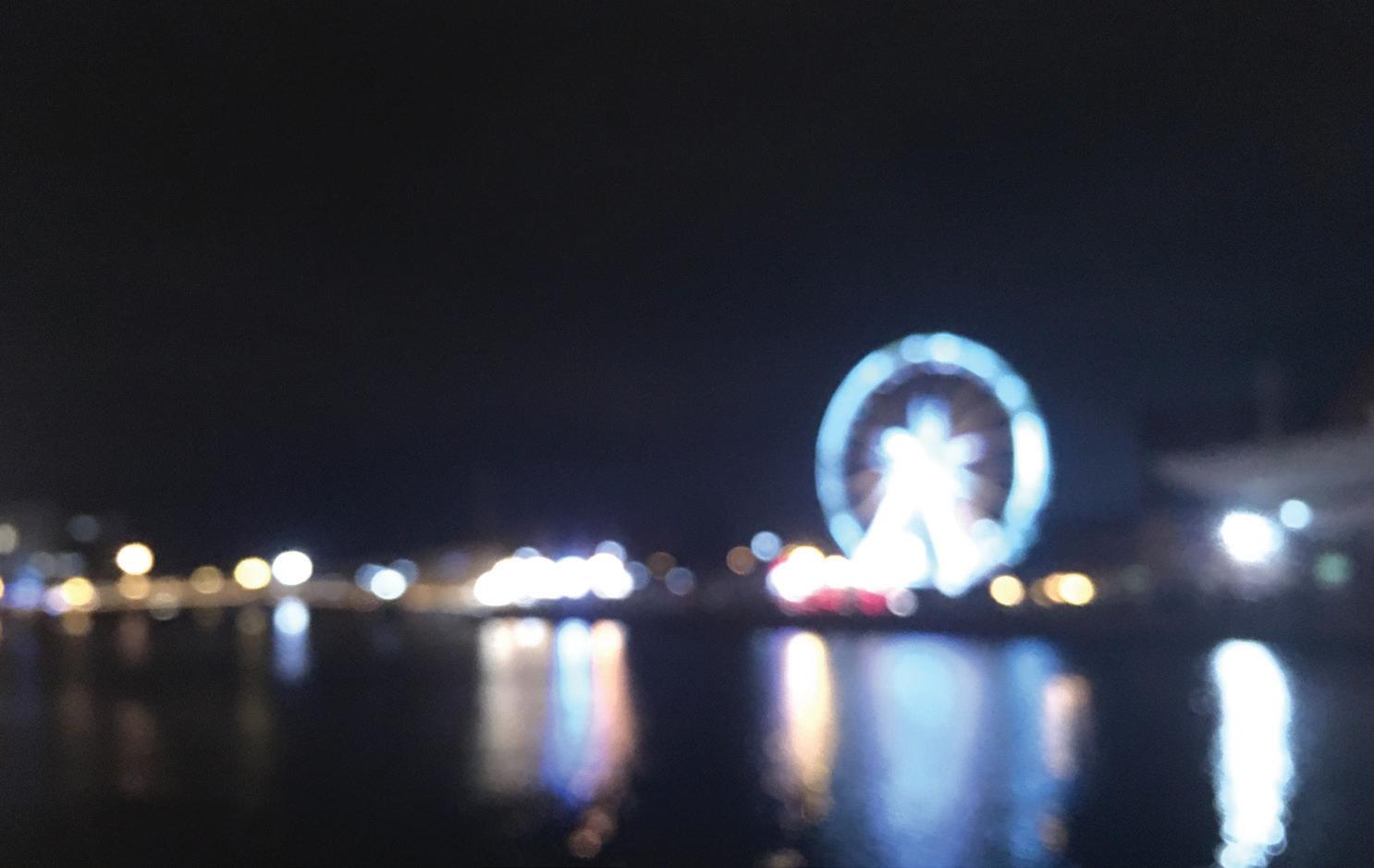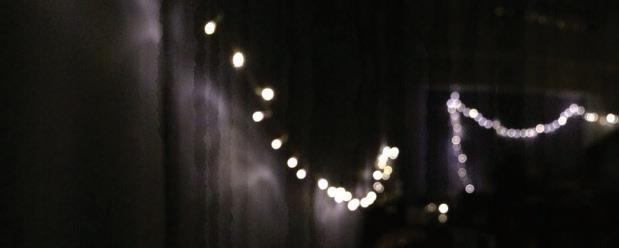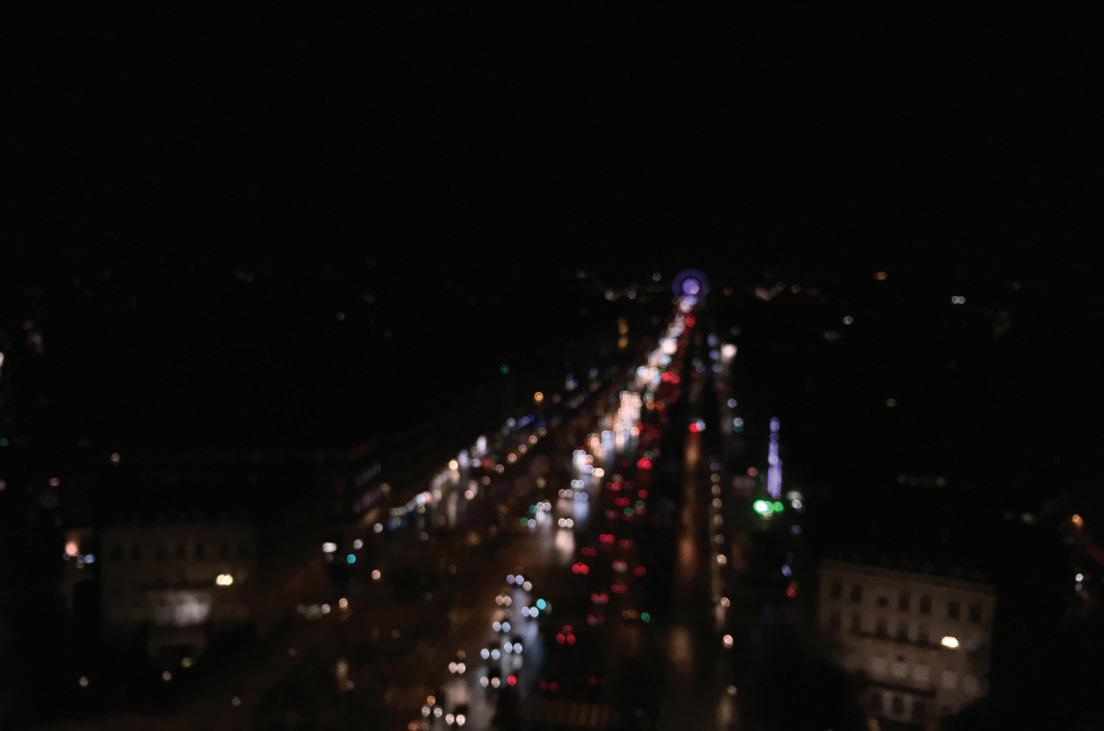
9 minute read
LIVING IN UNCERTAINTY: HOPE AND HUMAN FLOURISHING
Alvin Tan
Here’s a question. Would you choose a lottery that gives you a 50% chance of winning $1000, or a 100% chance of winning $450?
Advertisement
If you chose the latter, you’re in good company—many people are disincentivised by the uncertainty of the first option, even though theoretically you would receive more from it on average. (1) This type of behaviour is known as ‘risk aversion’, and in a season of seemingly incessant uncertainty, it may be particularly illuminative to understand how we process—and perhaps thrive in—such uncertain scenarios.
Formally, uncertainty arises in situations in which information about action outcomes is limited or incalculable. (2) In the laboratory, access to information is controllable by the experimenter, who is able to directly manipulate the relationships between actions and outcomes. But few real-life situations follow such a paradigm—the nature of the environment we live in precludes deterministic prediction of most events. Human brains thus need to account for this unpredictability in their decision-making processes.
As we have seen, humans generally dislike uncertainty, and we consider it a kind of penalty that can offset rewards. Studies in neuroeconomics have suggested that we assign a sizeable cost to uncertainty; this is demonstrated in the uncertainty effect, which is the phenomenon whereby a risky option is sometimes valued less than its worst possible outcome. For example, people on average were willing to pay $38 for a bookstore’s $50 gift certificate, but only $28 for a 50–50 lottery for $50 or $100 gift certificates, even though the outcome would be equal or better than the former. (3) This valuation may seem irrational at first glance, but it reflects the fact that uncertainty reduces our ability to prepare for the future, which causes us to prefer options that are more certain. Indeed, some neuroimaging studies have even shown that our brains calculate uncertainty about uncertainty—that is, how frequently reward uncertainty changes over time. (4) Evidently, our brains consider and integrate a whole assortment of uncertainties when we make decisions.

Why does uncertainty play such a big role in human cognition? On one level, it’s clear that uncertainty affects planning, and hence survival and flourishing. But neuroscientist Karl Friston has proposed a bigger claim—a “unified brain theory” revolving around uncertainty. He suggests that the ultimate aim of biological systems is to minimise surprisal (i.e. the discrepancy between predicted and observed information). (5) According to this argument, the successful prediction of information allows brains to maintain homeostasis (equilibrium) between their internal models of the world and the external states of the world. This is known as the free energy principle (with free energy being average surprisal over time) and is supported by evidence that the brain actively does attempt to predict incoming sensory signals. (6) This suggestion has been gaining popularity due to its ability to unify approaches from information theory, statistics, neuroscience, psychology, and artificial intelligence research, and it also resonates with the wealth of evidence that uncertainty is disfavoured in biological systems.

However, taking the free energy principle to its logical conclusion raises an important issue, known as the “dark room problem”: why should agents perform any action other than proceeding to the least stimulating environment and staying there? A darkroom devoid of sensory input would effectively reduce uncertainty to zero—and yet we do not observe actual biological agents doing this. On the contrary, placing humans in sensory deprivation environments results in widespread intellectual and perceptual deficits, and many participants in such experiments are unwilling to continue after 2–3 days. (7)
Friston has suggested that the dark room problem can be resolved by noting that the free energy function depends not only on sensations, but also on the model of the world predicting them—and thus the agent that is conducting this mental modelling. (8) Thus, uncertainty is only minimised in a dark room if the agent is optimised to predict and inhabit it. But this resolution seems to be circular: agents don’t occupy dark rooms because they don’t predict that they do, and they don’t predict this because such agents don’t actually occupy dark rooms. (9) Friston’s proposed solution merely shifts the question to another location: what is it about humans that predisposes them to not predict habitation in dark rooms?
Here’s my proposal: the motivation for continued human activity is hope—that is, an expectation of something that is yet to come which would improve the condition of the agent. Hope explains the innate human motivations of curiosity and exploration—the desire to seek new stimuli and situations, even though this by definition entails great uncertainty.

Exploration is a key part of most animals’ behaviour. If a particular plot of land has run out of food sources, the natural choice is to search for a new feeding location. The fundamental principle behind exploration is the idea that the prospective utility of an alternative goal may exceed the utility of the present task, and a sufficiently significant difference would mean that it is more sensible to pursue the alternative task instead. And yet, humans’ exploratory behaviour far exceeds that of any other living organism. We create and innovate, we investigate the world through science—we have even gone to the moon!
The humanness of the drive to explore can be characterised by the evidence that our frontopolar cortices—the front-most part of the brain, which is employed in exploration of alternative goals—are much larger than our closest biological relatives, and may even have a sub-region that has no analogue in monkeys. (10) Something fundamental to our design steeply inclines us towards exploration—and that something seems to be an unrelenting hope. When we have a strong conviction that a potential future state will be better than the current one, we head off in search of that future state and the paths that may lead to it.
But what gives us this hope of a better future state? It seems ridiculous to fixate on something that has little certainty, and for it to influence so much of our decision-making. The philosopher John Gray picks up on this in his critique of modern meliorism—the idea that human life can be gradually improved— by explaining that it is fuelled by the “Christian myth” of a new creation, an ushering in of a kingdom ruled by Jesus coupled with the destruction of evil. (11) To him, the modern atheist should shed themself of the allure of secular humanism, and confront the fact that humanity’s progress is a mere illusion. Without the beliefs of the Christian worldview, the notion of certain human advancement is baseless and untenable.
However, for the Christian, this is not an illusion or myth. It is a truth that is promised to us in the Bible. The new creation is described in the book of Revelation (particularly chapters 21–22), which speaks of a world in which there is no violence, no pain, no sadness, and no death. It is a picture of astounding beauty and brilliance. Most importantly, humans will enjoy the presence of God forever—the very thing we were designed to do. (12) This is the future state that we know is infinitely better than our current condition, and that we hope in.
The biblical concept of hope is not a vague, soothing analgesic or a placebo. Rather, it is a sense of trust and expectation, and a confidence that the thing hoped for is certain to come. Christians can hope in things that are as yet unseen because we have a living hope in the death and resurrection of Jesus Christ (1 Pet 1:3). Since we trust in the person of Jesus Christ, we can trust that he will come again and establish his kingdom in a renewed creation. Hence, this future state is not just better, but also a definite reality that will come to pass.
And it is not just Christians who have that nagging sense that the world at present is not in the best possible state it could be; rather, all of creation is awaiting that promised renewal (Rom 8:19–25). This instinctive longing is why hope functions as the currency of society. This is why we yearn to be in a better state, and why our mental models predict that such a state will come. This is why we are willing to devote resources to exploration, innovation, and creation. This is why we can thrive in uncertainty despite our negative evaluation of it. We are certain that there is something better, regardless of the intervening uncertainty.
Living in the midst of uncertainty requires a hope for a better reality on the other side. Such a hope motivates us to keep going, in spite of the discomfort that uncertainty puts us in. The real question, then, is this: do you have something—or someone—in which you can ground that hope?
Alvin is a third year Psychology and Linguistics student at Queen’s. He enjoys reading about everything, and is surreptitiously using this biography to solicit book recommendations, even though he probably already owns too many books.
1) Kahneman, D. & A. Tversky. ‘Choices, values, and frames’, American Psychologist, 39, no. 4 (1984). 341–350.
2) Huettel, S. A., A. W. Song, & G. McCarthy. ‘Decision under uncertainty: Probabilistic context influences activation of prefrontal and parietal cortices’, Journal of Neuroscience, 25 (2005). 3304–3311.
3) Gneezy, U., J. A. List, & G. Wu. ‘The uncertainty effect: When a risky prospect is valued less than its worst possible outcome’, Quarterly Journal of Economics, 121, no. 4 (2006). 1283–1309. It should be noted that each participant only underwent one condition, and were thus unable to compare between the two options.
4) Behrens, T. E. J., M. W. Woolrich, M. E. Walton, & M. F. S. Rushworth. ‘Learning the value of information in an uncertain world’, Nature Neuroscience, 10, no. 9 (2007). 1214–1221.
5) Friston, K. ‘The free-energy principle: A unified brain theory?’, Nature Reviews Neuroscience, 11, no. 2 (2010). 127–138.
6) Rao, R. P. & D. H. Ballard. ‘Predictive coding in the visual cortex: A functional interpretation of some extra-classical receptive-field effects’, Nature Neuroscience, 2, no. 1 (1999). 79–87.
7) Zubek, J. P., M. Aftanas, J. Hasek, W. Sansom, E. Schludermann, L. Wilgosh, & G. Winocur. ‘Intellectual and perceptual changes during prolonged perceptual deprivation: Low illumination and noise level’, Perceptual and Motor Skills, 15 (1962). 171–198.
8) Friston, K., C. Thomton, & A. Clark. ‘Free-energy minimization and the darkroom problem’, Frontiers in Psychology, 3 (2012). 130.
9) Sun, Z. & C. Firestone. ‘The dark room problem’, Trends in Cognitive Sciences, in press.
10) Mansouri, F. A., E. Koechlin, M. G. P. Rosa, & M. J. Buckley. ‘Managing competing roles—A key role for the frontopolar cortex’, Nature Reviews Neuroscience, 18 (2007). 645–657.
11) Gray, J. Seven types of atheism. London: Allen Lane, 2018.
12) “Man’s chief end is to glorify God, and to enjoy him for ever.” (Westminster Shorter Catechism)








